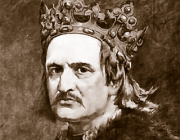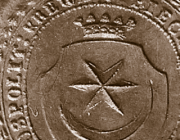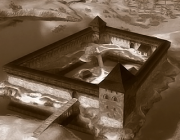A prophecy from the early twentieth century: Poland will rise when Kreva Castle lies in ruins
 11 November 2024
11 November 2024

In 1912, the Polish magazine Ziemia published an article by Wladyslaw Zagorski on the history of Kreva Castle. In it, the author mentions, among other things, a legend about the murder of Keystut and the history of Poland.
Zagorski points out that centuries later, the locals still remember the crime and make the sign of the cross every time they pass the Duke’s Tower, where the Grand Duke was killed. For this murder, God condemned Kreva Castle to destruction and tied the fate of Poland to it. Every year, a stone and a few bricks must be torn from the castle walls, and only when the whole castle is in ruins and nothing remains of it, then Poland will rise again.
Surprisingly, the prophecy came true!
The article was published at a time when Poland did not exist as an independent state. After the third partition of the Polish-Lithuanian Commonwealth in 1795, its lands were part of the Russian Empire, Austria-Hungary and Prussia. The country disappeared from the map of Europe for 123 years – until 11 November 1918, when the participants in the WWI signed an agreement to stop fighting. On the same day, the German occupation forces in Warsaw were finally disarmed and Jozef Pilsudski, released from prison, took command of the Polish army. He was soon appointed leader of the restored Polish Republic.
It is worth noting that Kreva Castle was already in ruins at this time, having been destroyed by Russian artillery shelling of German positions during the WWI.







